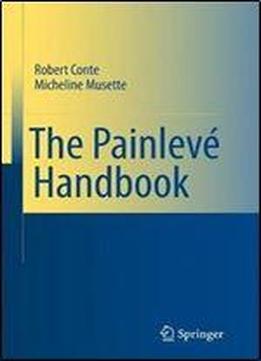
The Painleve Handbook
by Robert M. Conte /
2008 / English / PDF
1.5 MB Download
Nonlinear differential or difference equations are encountered not only in mathematics, but also in many areas of physics (evolution equations, propagation of a signal in an optical fiber), chemistry (reaction-diffusion systems), and biology (competition of species).
This book introduces the reader to methods allowing one to build explicit solutions to these equations. A prerequisite task is to investigate whether the chances of success are high or low, and this can be achieved without any a priori knowledge of the solutions, with a powerful algorithm presented in detail called the Painleve test. If the equation under study passes the Painleve test, the equation is presumed integrable. If on the contrary the test fails, the system is nonintegrable or even chaotic, but it may still be possible to find solutions.
The examples chosen to illustrate these methods are mostly taken from physics. These include on the integrable side the nonlinear Schrodinger equation (continuous and discrete), the Korteweg-de Vries equation, the Henon-Heiles Hamiltonians, on the nonintegrable side the complex Ginzburg-Landau equation (encountered in optical fibers, turbulence, etc), the Kuramoto-Sivashinsky equation (phase turbulence), the Kolmogorov-Petrovski-Piskunov equation (KPP, a reaction-diffusion model), the Lorenz model of atmospheric circulation and the Bianchi IX cosmological model.
Written at a graduate level, the book contains tutorial text as well as detailed examples and the state of the art on some current researchNonlinear differential or difference equations are encountered not only in mathematics, but also in many areas of physics (evolution equations, propagation of a signal in an optical fiber), chemistry (reaction-diffusion systems), and biology (competition of species).
This book introduces the reader to methods allowing one to build explicit solutions to these equations. A prerequisite task is to investigate whether the chances of success are high or low, and this can be achieved without any a priori knowledge of the solutions, with a powerful algorithm presented in detail called the Painlev test. If the equation under study passes the Painlev test, the equation is presumed integrable. If on the contrary the test fails, the system is nonintegrable or even chaotic, but it may still be possible to find solutions.
The examples chosen to illustrate these methods are mostly taken from physics. These include on the integrable side the nonlinear Schrdinger equation (continuous and discrete), the Korteweg-de Vries equation, the Hnon-Heiles Hamiltonians, on the nonintegrable side the complex Ginzburg-Landau equation (encountered in optical fibers, turbulence, etc), the Kuramoto-Sivashinsky equation (phase turbulence), the Kolmogorov-Petrovski-Piskunov equation (KPP, a reaction-diffusion model), the Lorenz model of atmospheric circulation and the Bianchi IX cosmological model.
Written at a graduate level, the book contains tutorial text as well as detailed examples and the state of the art on some current research.











